Many artists have contributed to D&D over the years, but only the greatest left a lasting impression on the game and its fans. In The Art of D&D (Part 1)we looked at five of the greatest artists ever associated with D&D: Caldwell, Elmore, Easley, Fields and Parkinson. These five set the bar for style and quality in the art of D&D throughout the 1980s. As D&D expanded in the years and decades to come, new artists stepped in to fill the giant shoes left behind by these masters. Today we look at three of them.
One of the smartest decisions Wizards of the Coast (TSR at the time) ever did was to make the artwork of one artist exclusive to a particular campaign line. It was marketing genius. The art was so distinct and so good that you immediately knew, just by looking at the advertisement or book cover, which campaign setting it was for. There was a direct correlation between the popularity and success of these product lines with the brand recognition the artists created.
Brom (Dark Sun)
In 1991 we travelled to Athas for the very first time. A world ravaged and scarred by reckless magic use, now a desert wasteland. The inhabitants struggled for survival in one of the harshest D&D settings ever created. The masses were repressed under the rule of the tyrannical Dragon Kings. The heroes were gritty, stern and tough. And nothing emphasized this like Brom’s art.
Brom’s work was used on the covers of all of the early Dark Sun releases. The original campaign box set, the supplementary materials, even the novels featured his work. The yellows, browns and reds gave Dark Sun a look unlike any other setting that came before it. Because of Brom, you knew what it was like for characters adventuring in Athas, even if you hadn’t read the materials. His covers left not doubt the Dark Sun was a campaign setting filled with danger.
 |
 |
 |
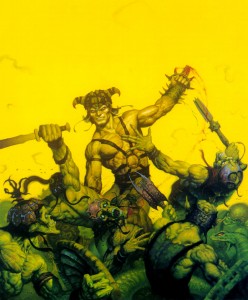 |
Tony DiTerlizzi (Planescape)
In 1994, three years after Dark Sun launched, the outer planes became more than a few supplementary pages in the back of the DMG. The Planescape setting was a hub of adventure where the most powerful and dangerous creatures ever put into a Monster Manual would meet and converse. The city of Sigil, run by the powerful and mysterious Lady of Pain, gave really high level characters a new place to adventure.
One of the things I liked most about Planescape was its unique look. Tony DiTerlizzi’s art was unlike anything I’d previously seen in D&D. It was very “sketchy” and nothing like the realistic paintings I was used to from artists like Elmore, Easley and even Brom. But it was more than that. Other artist has painted in a realistic style, but DiTerlizzi’s sketches looked both real and beautiful – even the fantastic and dangerous ones.
As with Dark Sun, Planescape materials were immediately recognizable as soon as you saw DiTerlizzi work. It was impossibly to see one and not think of the other. After Planescape ran its course and took a back seat to other D&D projects, DiTerlizzi was tapped to provide numerous illustrations for the AD&D 2e Monstrous Manual. I still reference some of his work as the definitive way a monster should look.
 |
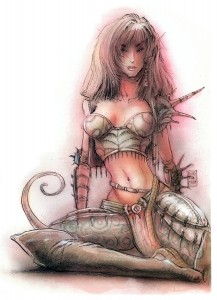 |
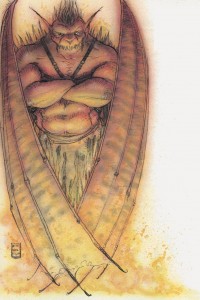 |
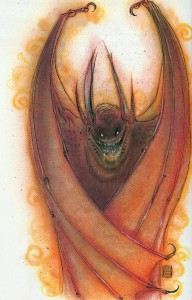 |
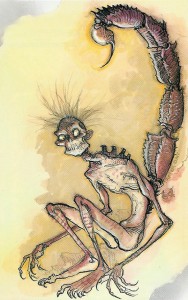 |
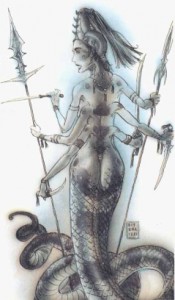 |
Wayne Reynolds (Eberron)
In 2004, after a highly publicized campaign creation contest, Wizards of the Coast announced that Keith Baker’s world of Eberron was the winner. The covers of all the Eberron books were provided by Wayne Reynolds. At the time, most D&D hardcover sourcebooks didn’t have pictures on their covers. The focus was on the brand name and the content within… until Eberron.
Reynolds produced lavishly detailed murals that graced the covers of every Eberron book. The work stood out which made Eberron books stand out. In much the same way that Brom showed us what Dark Sun looked like, Reynolds showed us the world of Eberron. His covers were like snapshots of the action-pact, war-ravaged setting of Eberron. He showcased the things that were new to us as players, but accepted as normal to the inhabitants of Eberron. His work was for many of us an introduction to things like Warforged soldiers, Dragonmarked Heirs, flying airships and the lightning rail.
He managed to capture excitement and adventure in his work. The subjects clearly weren’t “posing” as they often seemed to be for other artists (Brom, we’re looking at you). He managed to capture the lightning in a bottle that was the world of Eberron.
When D&D 4e was launched in 2008, Wizards of the Coast decided (thankfully) to return to books with pictures on the covers. Reynolds provided the art for the covers of the PHB, DMG, MM, Dungeon Delve and numerous others. He’s the one artist of the three profiled here who eventually branched out from his original brand. His work may not immediately make you think of Eberron any more, but you certainly think D&D.
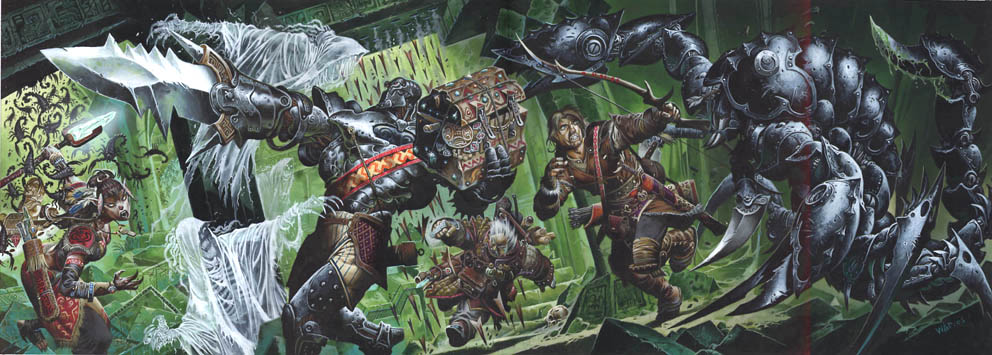 |
|
 |
|
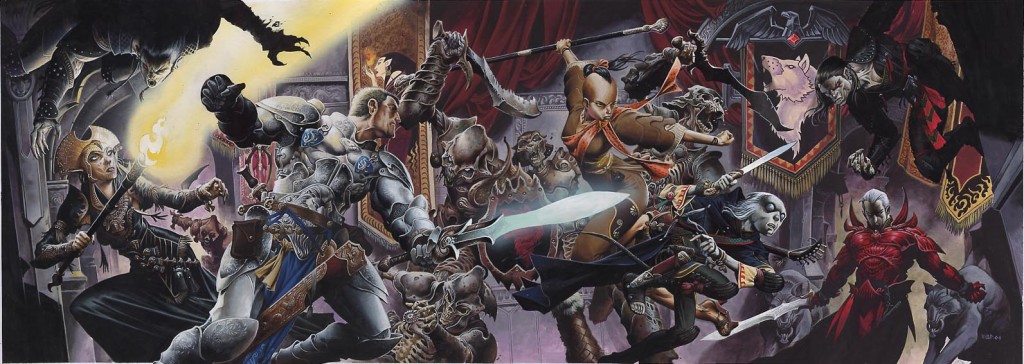 |
|
 |
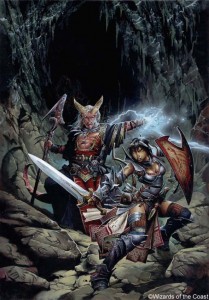 |
Additional Resources
Brom
Tony DiTerlizzi
Wayne Reynolds
As I mentioned at the end of The Art of D&D (Part 1) there’s never a right or wrong answer when you’re talking about art. I’ve included some of my favourite works by the artist featured above, but it’s totally subjective. I encourage you to share your thoughts and comments on which D&D artists you like best and which works really stand out for you. Are there any other artists that you feel should be added to the list of masters? Let the debate begin.
 Looking for instant updates? Subscribe to the Dungeon’s Master feed!
Looking for instant updates? Subscribe to the Dungeon’s Master feed!
10 replies on “The Art of D&D (Part 2)”
My favorite Brom art is the cover from the original Dark Sun module, Valley of Dust and Fire showing the Dragon of Athas, Borys:
http://darksunart.wordpress.com/2010/09/18/borys/
I was just getting out of D&D at the time that Planescape was coming in. For me Tony DiTerlizzi’s art will always be synonymous with Changeling: The Dreaming. And yes, I mean that as a compliment.
[…] This post was mentioned on Twitter by DarkTouch, RPG Bloggers Network. RPG Bloggers Network said: The Art of D&D (Part 2) from Dungeon's Master http://goo.gl/fb/dTBzI #RPG […]
Hey, weren’t you hoping to get this article out December last year? 😉
It was a long wait but the feature comes back in good form. Again great choices.
Brom indeed gave us the “feel” of Dark Sun. The colour palette, the rugged hostile landscape and the grittiness of characters. I agree that his scenes may appear somewhat static but there is a kind of disturbing ominous viciousness in those images, hinting that savagery is shared by monster and hero alike in that world.
DiTerlizzi holds a special place for many D&D fans and I’m no exception. Someone must’ve had a stroke of genius to commission him to illustrate Planescape. What other art would fit the bill then his dreamlike style. But like many other I most fondly remember his art in Monster Manual – very understated and very beautiful.
I would like to add:
Todd Lockwood
D&D fan and a great artist probably best known for the covers and artwork of 3rd edition manuals (Song and Silence for example) and pretty much all the covers for the new edition of Drizzt books. He did some stuff for D&D earlier than that and one can find his art on several Forgotten Realms, Ravenloft and Dragonlance products. One of my favourite pieces is his Dragonlance (the one from the Dragonlance Classics 15th anniversary book). It feels a bit posed but I find the composition of the characters truly majestic and quintessentially Dragonlance-like on par with the best Elmore’s art. It also establishes Lockwood as a master dragon painter, a skill that shines in many of his works notably Draconomicon (for the 3rd ed) and the awesome Wings of Fire. Another example of his pretty remarkable work is the Bar Fight (aka 30th Anniversary D&D Party poster). It’s brilliantly whimsical and at the same time offers an artistic homage to all D&D art (there is even a classic reference to an iconic D.A Trampier’s cover); I love it.
Going back to AD&D I would like to make one honorable mention of this cover:
http://strahdsdomain.webs.com/Van%20Richten%27s%20Guide%20to%20Vampires.jpg
by Den Beauvais. I’m not a fan of his stuff but that cover has always been one of the best renditions of that particular monster (that moonlight illuminated cape/webbed wing is simply fantastic) plus he captured the atmosphere of Ravenloft brilliantly with this single piece.
Again, nice article. Cheers
Wayne Reynolds is amazing to me
@Phalse
I’d never seen that one by Brom before. Very cool.
@DarkTouch
When I was researching the artists in this article I learned that Tony DiTerlizzi was the author/artist of the Spiderwick Chronicles. It seemed so obvious I’m amazed I didn’t realize it before. His style is certainly unique.
@Voidman
Busted, I’m officially 12 months late with this article. I have no excuse.
I didn’t immediately recognize the name Todd Lockwood but a quick search online brought up lots of familiar images, especially the Drizzt covers. This guy sure knows how to make dragons look cool and dangerous.
@Tadpole
I too am a huge fan of Reynolds. I think Wizards needs to lean on him a lot more for upcoming covers and interior art. But that’s just my opinion.
@Ameron
No worries, you can turn this into an annual feature. 😉
I like Wayne Reynolds’ crisp style and attention to detail but sometimes I find his works a bit too cartoonish for my taste. Yeah, I know one can argue that DiTerlizzi style has a bit of a naïve quality but that’s just adds to its oneiric, fable-like charm. Some Reynold’s stuff at least in my opinion is almost too rich and almost resemble manga art (not necessarily a bad thing). Also, don’t you feel that the guy is a bit all over the place? I probably first run into his art on Magic cards (yeah I know… but some of the art was excellent) but his portfolio is quite impressive indeed (some realistic historical Osprey booklets covers even). These days however, he illustrates two tier one (and competing) rpg products and I admit I probably prefer his Pathfinder illustrations then the 4th edition ones – he did Dark Sun covers justice though, not Brom level but not too shabby. Still, currently he is probably the defining artist in the hobby.
Searching for his art I found a pretty nifty article, Reynold’s Critique, by your fellow blogger from 2 yrs ago link below if you interested (hope its okay to plug it here):
http://trollsmyth.blogspot.com/2008/03/critique-of-wayne-reynolds-art.html
I love Wayne Reynolds work. It really captures how I feel about Eberron or maybe it is the embodiment of Eberron. Chicken or Egg?
Wow… Catlord!!! Tony’s work is so amazing. Just by watching this I wish to go back to play. His work nurtured the imagination of so many.
[…] Be sure to check out our follow-up post: The Art of D&D (part 2) […]